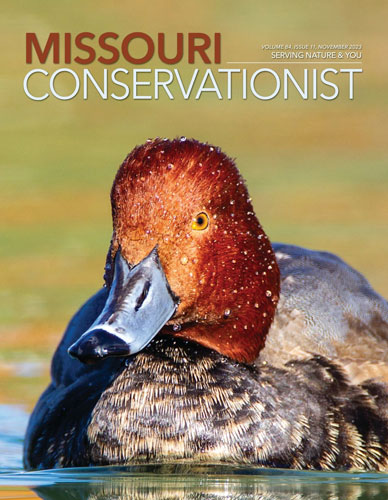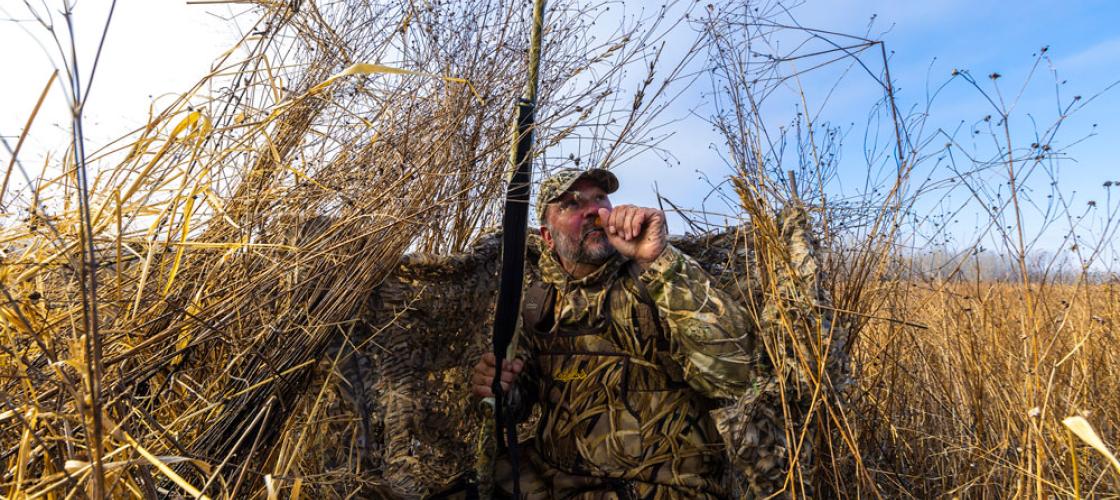
Watching an autumn sunrise light up a marsh with ducks flying overhead is an adventure, especially when a group breaks off and glides downward toward decoys. The colors on their wings and backs come into clear view. Quacking chatter and wingbeats are heard. A hunter’s heart quickens, nature’s richness is felt.
Waterfowl hunting is a unique sport, one that’s affordable for hunters willing to explore, use simple gear, and hunt at Missouri’s public wetlands. Like any sport, duck and goose hunting can be a major or minor financial investment. But good times and wild game for the supper table are available to either approach.
Private duck and goose hunting clubs or blind rental on private land are available. They are valuable because they provide wetland habitat for all wildlife, hunting opportunities for people, and they contribute to local economies. Yet, they can be costly.
But low-cost ways to enjoy good shooting and harvesting ducks for dinner are also available. MDC has public wetlands that serve waterfowl migrating southward in autumn, and a staff that is happy to help hunters learn how to enjoy them.
A Place to Hunt
Prime hunting is found at 15 conservation areas across the state that MDC intensively manages for wetland wildlife and waterfowl hunting. Hunting is managed on these areas with a draw system for permanent hunting blinds or specific pools for hunting.
“These areas offer hunting opportunities through random drawings,” said Craig Crisler, an MDC wildlife management biologist who manages the wetland-focused Bob Brown and Nodaway Valley conservation areas in northwest Missouri. “We have staff available every morning to help people who are new to duck hunting or new to the conservation area.”
Hunters will find opportunities statewide. For example, Ten Mile Pond Conservation Area (CA) is in the Mississippi River lowlands in southeast
Missouri’s Bootheel. Ted Shanks CA is also within the Mississippi’s bottomland ecology north of St. Louis. Eagle Bluffs and Grand Pass conservation areas are in the Missouri River bottoms in the center of the state. MDC also conducts drawings for hunting spots on U.S. Army Corps of Engineers properties along the Mississippi River north of St. Louis. That’s just a partial list.
MDC allocates hunting positions at managed waterfowl hunting areas with drawings for pre-season reservations, in-season reservations, and through daily drawings. For daily drawings, hunters gather during the pre-dawn hours at an area’s headquarters. Most areas conduct daily “poor-line” drawings for positions saved for the morning draw, or for spots where a hunting party did not show up to use a reservation. For poor-line hunters who do not draw a blind assignment, they may head to an area’s designated walk-in waterfowl hunting areas that are open to all. Most areas also have an ADA compliant blind available by reservation for hunters with mobility challenges. Hunters who draw a blind or pool can have up to three other hunters with them.
Scouting an area for good wetland habitat and waterfowl usage is important. Don’t hesitate to contact area managers if you have questions. Hunters new to waterfowl hunting are welcome and encouraged at MDC conservation areas.
MDC also offers many waterfowl hunting opportunities at other conservation areas that have wetlands and lakes open to all without a managed draw. Hunters can walk, wade-in, or boat into good hunting spots. MDC maintains 80,000 acres of wetland habitat on 169 conservation areas where walk-in waterfowl hunting is allowed.
For any duck hunting, concealment is important to not spook ducks or geese as they’re flying into gun range. Some hunters use camouflage on boats or improvise onshore hunting spots using willows, reeds, or grasses to hide from approaching ducks. Once again, scouting helps. Make sure an area listed as offering waterfowl hunting is being actively used by ducks or geese.
Simple Works
Crisler, also an avid waterfowl hunter, uses a homemade cart to haul in a plastic bucket for a chair and a dozen decoys for walk-in hunting. For cover, he uses tree saplings and marsh grass. Ducks will avoid decoys and a hunter’s position if they spot the movement and outlines of people. Hunters stay hidden until ducks are within gun range.
Brian Perez of Independence hunts ducks at Smithville Lake north of Kansas City when he’s successful in an annual Corps of Engineers drawing for permission to construct temporary shore blinds. But in years when he doesn’t draw a blind spot, he’s found an old farm pond on public land with lots of weed and shrub growth on shore for hiding places.
“It’s about a mile walk back to it,” Perez said. “I carry in my waders, a few decoys, a chair, my gun, and hunker down in the weeds. I’ve shot many a duck there.”
Good maps and pre-season scouting are key. Finding ponds and seasonal wetlands close to larger wetlands or lakes that attract waterfowl are good bets. Private farm ponds sometimes attract ducks, but always get landowner permission to hunt.
Gearing Up
Gear for waterfowl hunting need not bust your bank account. Warm and dry clothing, waders, decoys, and calls are on the list.
Camouflage clothing helps with concealment, as does any rugged clothing that blends in with the colors and textures of the habitat near the water. Hip waders or chest waders are needed for wading in the water to retrieve downed game, especially if a hunter is not using a well-trained retrieving dog. Insulated chest waders also help keep a hunter warm and dry on the cold and rainy days of autumn and early winter, which can also be days when the ducks are really flying and coming into decoys.
Decoys are floating replicas of ducks and geese with weights for anchors that hunters place on the water in formations that mimic resting and feeding waterfowl. Whether you need a few, a dozen, or dozens depends on where and how you plan to hunt. Decoys vary in cost, but natural-looking placement on the water is more important than purchase price. Garage sales, want ads, and second-hand stores are places to pick up decoy bargains.
Hunters blow into hand-held duck and geese calls to mimic the chattering sound of feeding and loafing waterfowl, which attracts and reassures the real thing. A good caller can lure ducks toward decoys and hunter hiding places.
Seasoned hunters may have several calls of different styles hanging on a lanyard. But a few calls will do, as practice and skill are most important. Calls for less than $20 are available. Instruction is available on the internet. But the best free instruction is found listening to ducks in the marshes. Some hunters visit wetlands during the spring waterfowl migration to listen to real ducks and imitate them.
Boats to Get You There
Getting to the best spots at wetlands or lakes may require a boat. Many duck hunters use boats, canoes, or kayaks that are simple in style and relatively cheap in cost. MDC’s managed wetlands often have channels or canals flooded in fall that hunters use to reach designated blinds or hunting spots. Hunters may hunt from boats or simply use them to reach a blind or a good hiding spot on shore. Shooting waterfowl from a boat is only legal if the boat is stationary.
Caleb Gentry of St. Joseph hunts regularly with family and friends at MDC wetlands, such as the Nodaway Valley CA. Sometimes he walks into a hunting spot. But when boats are called for, he uses a simple flat bottom aluminum boat propelled by an outboard motor designed for use in shallow, muddy waterways. The shallow-draft boat gets him to designated hunting spots that he’s drawn, or it lets him maneuver to good spots where open hunting is allowed.
“The key to success,” Gentry said, “is the amount of scouting you do and knowing where the ducks want to be.”
Other hunters may use johnboats with small motors in the standard outboard styles, or bigger boats and motors for larger waters. Hunters sometimes rig up fishing boats with homemade frames. Then they cover the frames with reeds, grasses, or brush to create floating blinds.
Some hunters paddle kayaks and canoes to hunting spots.
“I’ve hunted out of a canoe since I started hunting at Four Rivers [CA] in 2000,” said Carl Elmore, who lives near Montgomery City.
Elmore first hunted ducks at Ted Shanks CA. Now, he often starts his season hunting for teal in September at Bob Brown CA in Holt County. But when the regular duck and goose season opens in the Middle Zone, he hunts at Four Rivers CA in Vernon and Bates counties. One money saver, he’s tent camped at the primitive camping sites at the area, and in recent years, he secured permission to camp at a nearby landowner’s farm.
At Four Rivers CA, hunters draw to hunt in designated wetland pools. Hunting from his canoe, Elmore usually lays down in it while calling and then rises when it’s time to shoot. He rigs grass mats and perhaps some local vegetation to hide. Elmore uses as many as five dozen decoys, though at times he downsizes the spread.
“I can get into a lot of good places with my canoe,” he said.
Guns And Gun Dogs
Elmore does hunt with one companion, Brees, his Labrador retriever. Brees lays down in the canoe behind him while he’s calling and waiting for ducks.
Dogs retrieving downed game is both a big help and a joy to watch, and the companionship is rewarding. For many hunters, enjoying a good hunting dog — and perhaps family pet — is worth the time and money invested in them.
But dogs are not essential to being a waterfowl hunter. Wading to retrieve downed game works. Just be sure you know the water depth and bottom structure where you hunt. Hunters who use boats to reach hunting spots also can use them to retrieve game.
Waterfowl are hunted with shotguns, using only shot shells with non-toxic pellets. Specialized waterfowl shotguns are available and can be costly. But many successful hunters use one relatively inexpensive shotgun for both waterfowl and upland game birds. Some use shotguns with variable chokes, such as choke tubes. But others let ducks get into the right range for the improved cylinder, modified, or full choke barrel on their shotguns. A money saving tip — used shotguns can shoot just as smoothly as new ones and be more affordable.
“I only have one shotgun for all of my shotgun hunting,” Crisler said. “Choosing the proper ammunition and shotgun choke is critical. For duck hunting where I feel I can get the ducks to work in close, I shoot 3-inch No. 4 steel shot and use an improved cylinder or modified choke. Many other people I know shoot No. 2 steel shot as well.”
Getting Started
For newcomers to duck and goose hunting, visit MDC’s web page for waterfowl, short.mdc.mo.gov/4p6. MDC’s 2023–2024 Migratory Bird and Waterfowl Hunting Digest is a thorough overview of regulations and hunting opportunities throughout the state. The printed digest is available free at MDC offices and sporting goods stores, or online at short.mdc.mo.gov/4SZ. Another tip, check in late summer and autumn for MDC’s in-person or online waterfowl hunting classes listed on MDC Events, mdc.mo.gov/events. When in doubt, call an MDC office and ask questions.
Wetlands have a wild beauty in autumn that makes hunting waterfowl rewarding even when ducks and geese are scarce. But veteran hunters know, there will be a day when ducks are crisscrossing overhead and some glide in with wings cupped. Being there to see such a sight is everything.
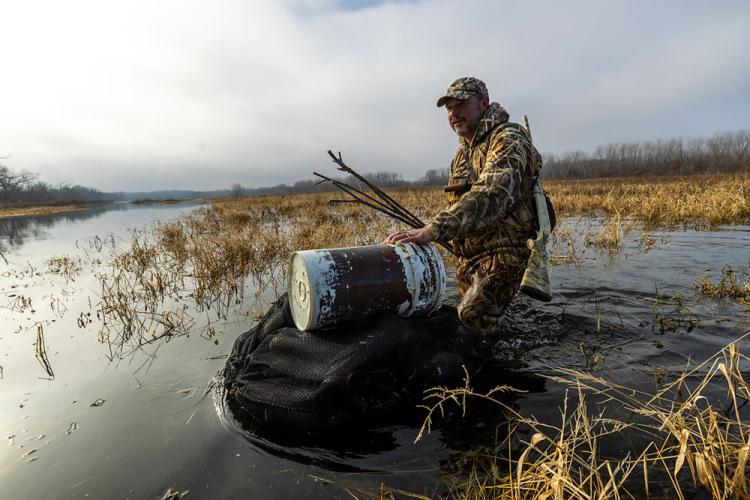
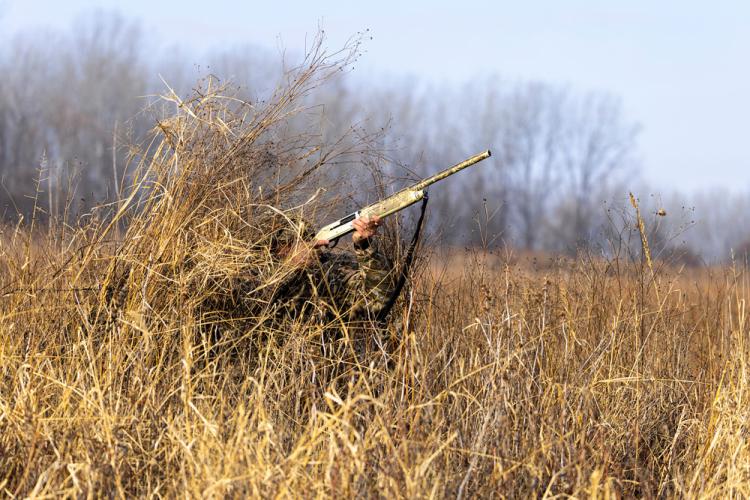
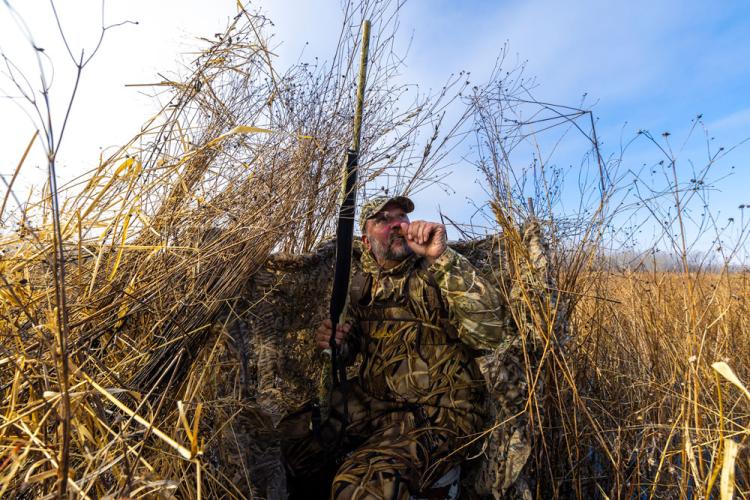
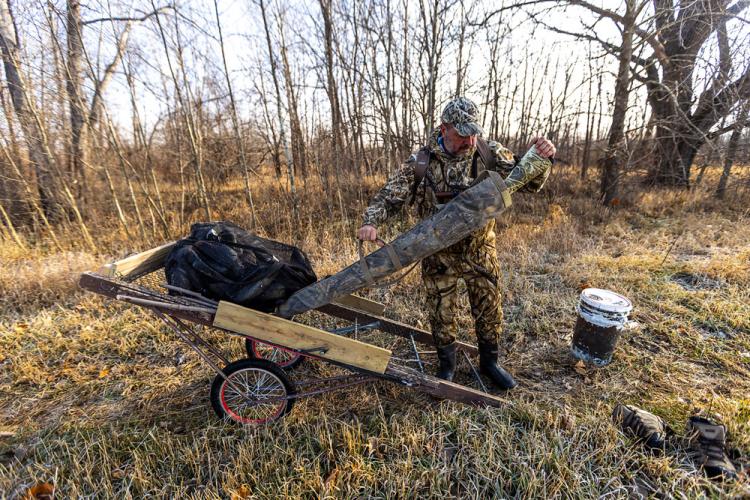
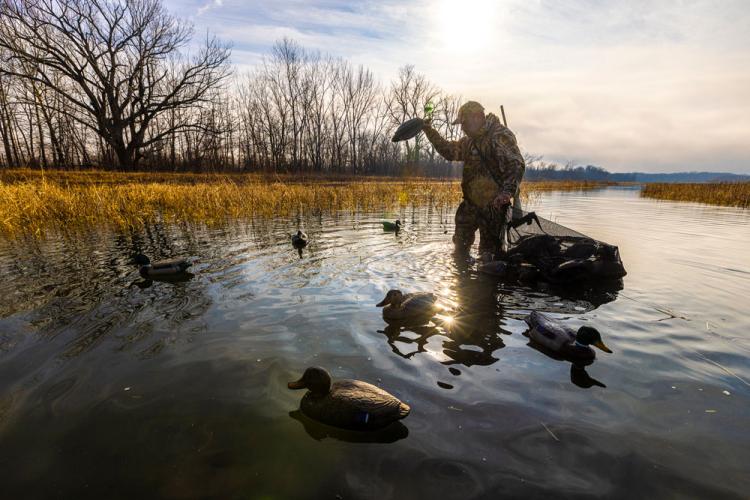
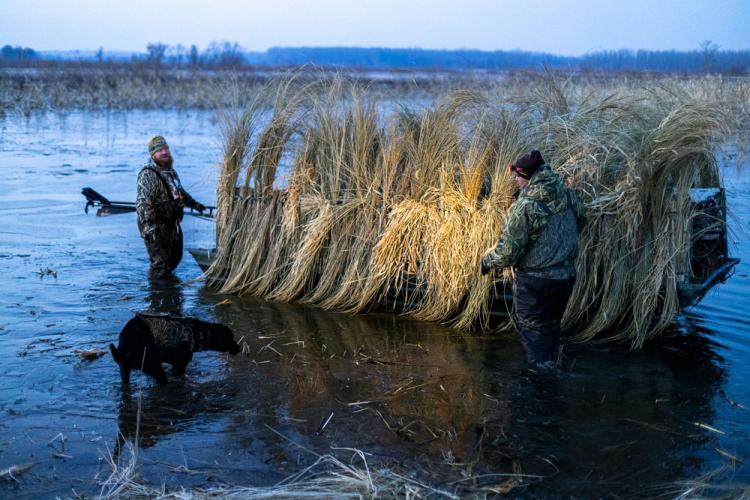
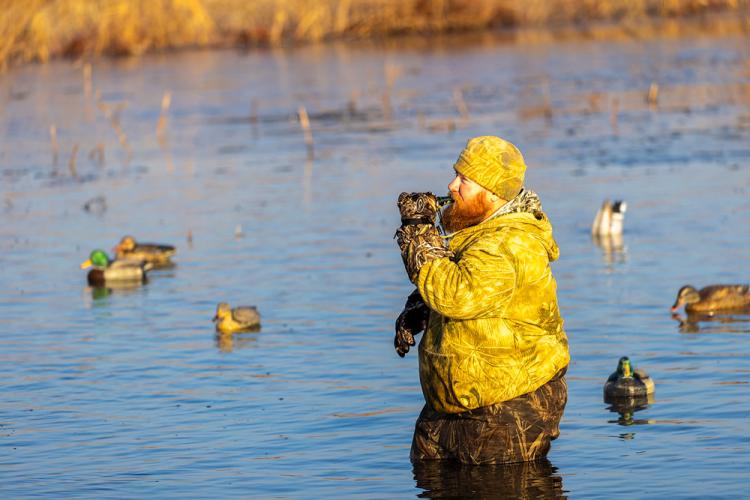
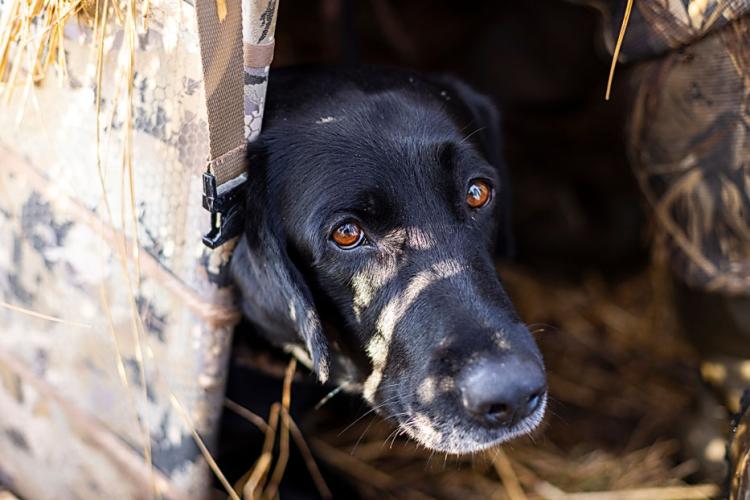
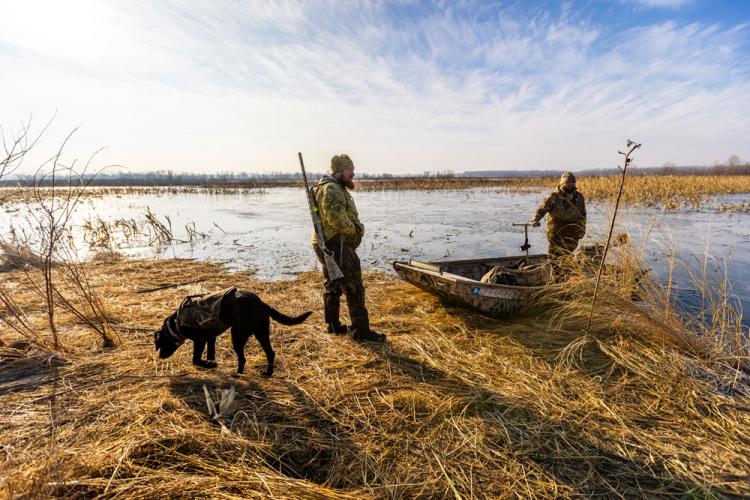
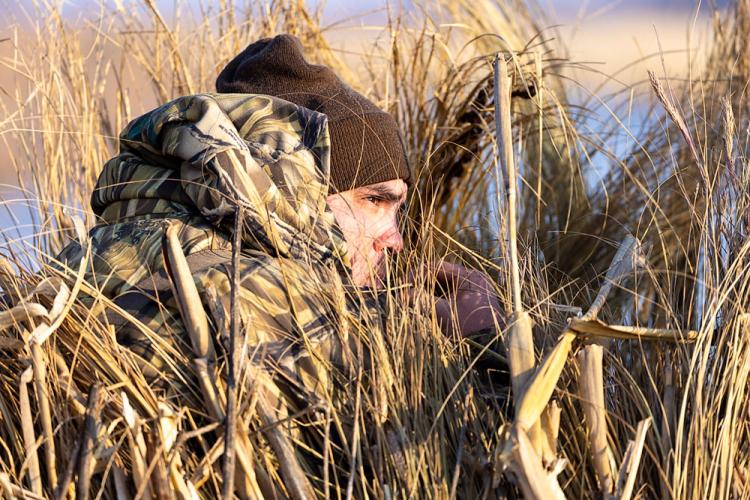
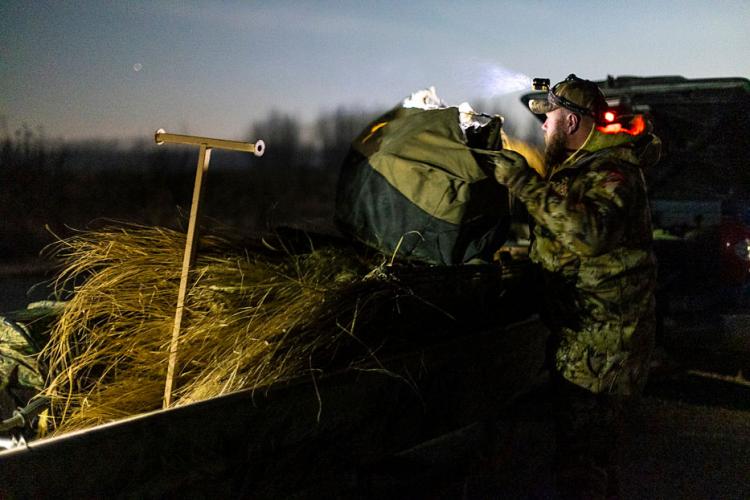
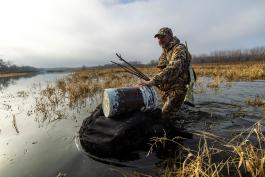
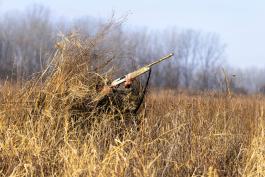
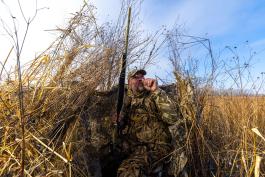
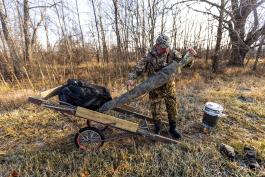
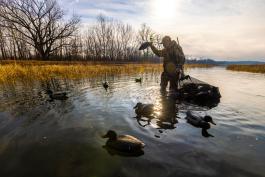
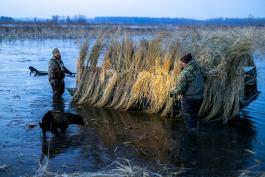
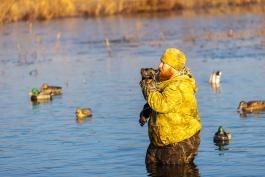
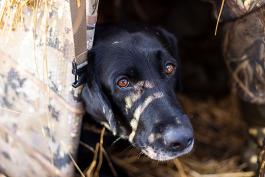
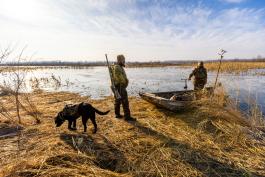
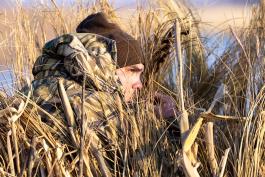
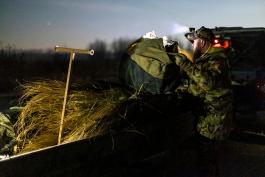
Also In This Issue

Prized for more than just their pelts, they are a diner’s delicacy
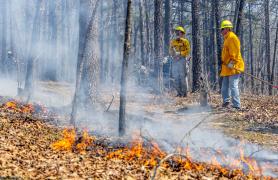
Prescribed burn associations help landowners bring out the best in their habitat
And More...
This Issue's Staff
Editor - Angie Daly Morfeld
Associate Editor - Larry Archer
Photography Editor - Cliff White
Staff Writer - Kristie Hilgedick
Staff Writer - Joe Jerek
Staff Writer – Dianne Van Dien
Designer - Shawn Carey
Designer - Marci Porter
Photographer - Noppadol Paothong
Photographer - David Stonner
Circulation – Marcia Hale






















